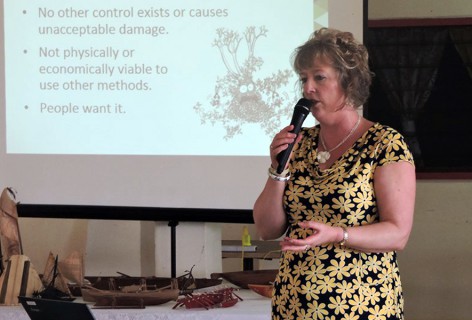Chromolaena
Impacts
Chromolaena is a major problem of grazing lands where it can form large dense infestations 2-3 metres high, outcompeting preferred grasses, reducing stocking rates, and productivity. In food gardens or in small subsistence blocks, it can outcompete and smother crops such as taro, yams, cassava and leafy vegetables. In plantations, chromolaena affects the establishment of new trees, competes with bananas, papaya and cocoa, and can form dense infestations below coconut trees and oil palm, interfering with the harvesting of nuts.
Chromolaena is toxic to cattle. Animals may die from liver damage if too much of the plant is consumed. Chromolaena burns easily, so it can increase the risk of fire, especially in plantations and native forests.
The impacts of the chromolaena are expected to increase in the future if it is allowed to continue to spread and colonize new areas. Chromolaena’s ability to thrive in a variety of soil types and climatic conditions makes it particularly well-suited to take advantage of changing environmental conditions, including those caused by climate change.
Chromolaena plant
Control methods
Chromolaena is difficult and time-consuming to control. Slashing is the most common method for subsistence farmers. However, infestations can quickly re-establish as plants can re-grow from the base or remnants, if not destroyed completely.
However, the use of natural enemies provides a good option. Chromolaena has been a biocontrol target since the 1970s. A leaf-feeding moth (Pareuchaetes pseudoinsulata) was the first natural enemy to be released, being introduced into Africa, Asia and the Pacific, where it has provided some control. However, a stem-galling fly (Cecidochares connexa), which was first released in Indonesia in the 1990s, is the most effective natural enemy. It has been released in Africa, Asia and the Pacific and has provided very good control of chromolaena, particularly in PNG and in some Micronesian countries.
